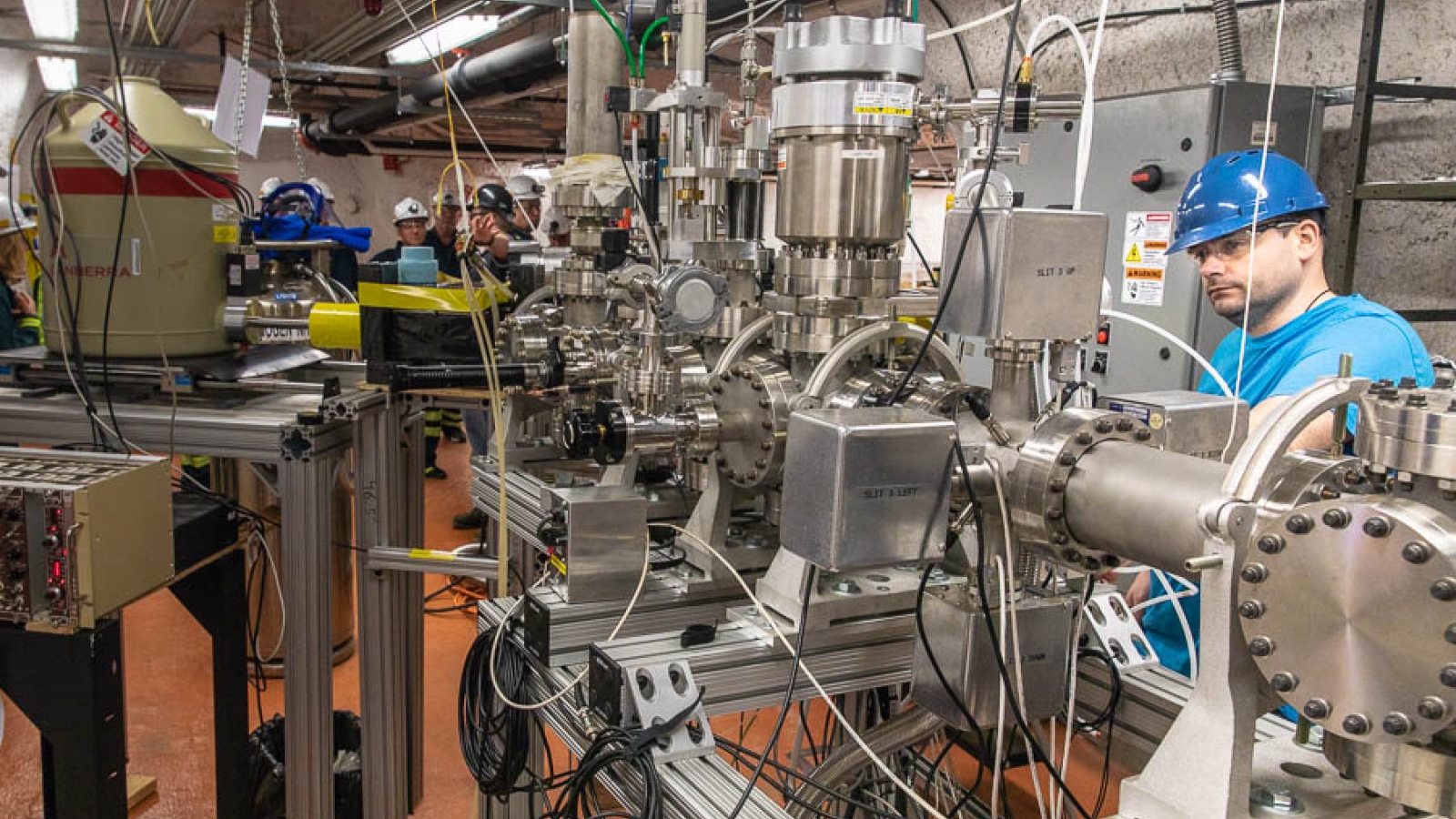
Daniel Robertson, an experimentalist with CASPAR, explains how the accelerator works.
Dr. Daniel Robertson is a nuclear astrophysicist who studies the complex interactions that take place in the heart of stars—interactions that produce the elements necessary for life. But to study these stars, Robertson travels to a laboratory nearly a mile underground.
Robertson is a research faculty member at the University of Notre Dame and the technical director of CASPAR, a low-energy particle accelerator at the Sanford Underground Research Facility that will allow researchers to mimic nuclear fusion reactions in stars.
“It’s silly, isn’t it?” Robertson said. “We are going as far away as possible from a star in order to measure it.”
Robertson’s work underground is an integral part of a three-tiered approach to nuclear astrophysics—observation, theorization and experimentation.
A Scientific Tripod
Observation of the stars has been around for centuries, slowly transforming from charting stars with the naked eye to investigating stellar environments with satellite telescopes. Observers look at the light and energy stars produce at the surface, all of which hint at the reactions taking place deep within the stars.
“Observers get superficial information on the outside of the star and can speculate at what is happening at the core,” Robertson explained. “This is limited, however, because it is pure observation.”
As curious humans attempt to explain the data they receive, observations quickly evolve into theories. Theorists piece ideas together, hoping to explain what we can see and measure in a larger context. They then build a computational model of an entire stellar environment.
“That is great, but it’s all in someone’s mind (or on their computer screen). At CASPAR, we back up those ideas with experimentation,” said Robertson.
Experimentalists like Robertson test the theories to see if they produce the effects seen by observers. To do this, they hone in on some of the elements they believe are interacting in the stellar environment, then recreate it in labs around the world in a process called low energy nuclear astrophysics.
“While we cannot recreate a star—we can recreate some of the key mechanisms that we think are taking place inside the star,” said Robertson.
CASPAR (Compact Accelerator System for Performing Astrophysical Research) is a low-energy particle accelerator that allows researchers to send specific particles toward a target, forcing them to interact as they would inside a star. The data they receive from these experiments allows them to inform theorists, who input the data into their computational models.
“Usually they will find out that they were, in fact, horrendously wrong,” said Robertson. Theorists must then reimagine their theories, asking observers to look deeper and ascertain more data. When a new theory is formed, it will be tested by a different experiment.
“It’s like three legs on a tripod—each one is supported by others,” Robertson said. Round and round, these approaches inform each other’s processes.
“It sounds really frustrating, because you are going around in a circle between the three,” said Robertson. “But what you’re actually doing is spiraling inwards. Eventually, you will come up with a solution that works for everyone.”
Underground Hunt
Observers get to fix their eyes and telescopes on space; theorists compute complex ideas on computer screens—so why do experimenters like Robertson travel below the surface of the earth?
In the heart of a star, many reactions are taking place at a relatively low energy, called the “burning window.” In this window, the probability of reaction occurring drops to nearly zero. While this is perfectly all right for a star, with enough time and matter to wait for a reaction, it is not conducive to the curious scientific community’s timetable.
Thus, experimenters use particle accelerators to force these elements to interact at low energies, mimicking stars. Recreating these reactions, however, produces low-energy results, which are notoriously difficult to measure. On the earth’s surface, these already elusive results are drowned out by the noise of radiation caused by the constant bombardment of cosmic rays from the sun.
“We look at the telltale traits of the reactions we are creating,” Robertson said. “The trace of these reactions is so weak that everything around you interferes. You’ll see a huge mass of signatures, but none of them are what you are looking for.”
In order to reduce the noise and better measure these low energy results, scientists go a mile beneath the earth to find some peace and quiet.
“At the Sanford Lab, we slowly peel back all the layers of misinformation and hone in on a signature sign of the interaction,” Robertson said.
Stellar Alchemy
Scientists are particularly interested in the reactions taking place in the heart of a star, because these reactions produce the elements responsible for all the matter we see around us.
“It’s like stellar alchemy—forming something new,” said Robertson.
Together, observation, theory, and experimentation, work to discover where and how elements are made. Knowing this, we can begin to explain the origins of matter on earth, in our solar system and in the universe.